Winegrower calendar: care of grapes by seasons
Own grapes are the dream of many gardeners. This is a thermophilic plant, and it is very difficult to grow it in the middle lane. Grapes can be eaten or used as a raw material for making wines. Grapes require special care, compliance with various rules, so each grower has his own calendar of work. Every season and every month the vineyard needs special care, otherwise a good harvest may not be expected.
Content:
- What is a grower calendar?
- Spring grape care
- Summer grape care
- Grape care in autumn
- Features of winter care
What is a grower calendar?
Experienced winegrowers schedule grape care procedures by seasons, months, and even individual days. To grow a good harvest of juicy grapes, you need to follow the basic rules of care and provide the plant with all the necessary conditions for good growth.
The grower's calendar serves as a kind of timetable for gardening work.
Most often, the calendar is universal, but you can make changes to it in accordance with weather conditions (early or late spring, the first frosts in the region, etc.).
Grapes cannot be called a very capricious plant, but they need careful and thoughtful care. In the conditions of the middle zone, this plant does not take root very well due to its low frost resistance, therefore, vineyards must first of all try to be protected from cold and frost.
Growing grapes has its own characteristics:
- The grapes do not like their neighbors, so the vineyards are usually located separately on the site. Grow this plant with tomatoes, onions and other horticultural crops are unproductive: they interfere with each other.
- If you dream of large grape harvests, but the winter in your region is harsh and with little snow, you will either have to choose the right variety or build a greenhouse. A heat-loving plant will not bear fruit well in case of strong temperature changes.
- Grapes tolerate any type of soil well, but drainage is best before planting if the soil is clayey and heavy. When moisture stagnates, the roots begin to rot.
- Experienced growers say that grapes love not only warmth, light and feedingbut also human concern. The plant responds to the caring hands of the grower and bears fruit better.
- Choose your grape variety carefully. 90% of success depends on this. However, even if the variety is frost-resistant, advice on sheltering and protecting the grapes from frost should not be neglected.
Spring grape care
In the spring, the main work begins on the preparation of grapes for the growing season and fruiting. The better the preparation is done, the more chances you will have a rich and tasty harvest.
Plant care differs depending on the month, but work should begin in March, as early as possible:
- In March, pruning is no longer carried out. The vineyard is inspected for damage. If there are any cracks or breaks, you need to process them, otherwise in April the vines will “cry” and the plant will lose its important sap.
- To stop the loss of moisture during sap flow, you need to treat all cuts and breaks with linseed oil mixed with boric acid, chalk and special paint designed for these purposes. The stores also sell special balsams for the treatment of the bark.
- In March, it is necessary to dig up the soil between the rows and make the first top dressing. mineral fertilizers.
- In April, after the end of the night frosts (after the 5th day), you can begin to open the vineyards from the winter shelter. At the same time, you can prevent diseases and pests, spray the vineyard drugs... This is done before the kidneys swell.
- In the second half of April, you can plant new grape seedlings or produce grafting.
- If, after removing the covers and films, you find mold on the vine, there is no need for processing. In the fresh air, mold will disappear on its own within a few days.
- At the beginning of May, a garter of grown shoots or a new garter of old plants begins. The grapes are constantly tied up as they grow.
- Also in May, a grape scrap is held. All unnecessary shoots, twins, tees are removed, only the strongest and healthiest are left. The fragment is carried out three times in the spring as the shoots grow.
- To enhance growth in May, you can make the following top dressing, as well as remove excess inflorescences to reduce the load on the shoots.
Summer grape care
In June, the grapes begin to bloom. During this period, you need to especially carefully look after the plant. If done correctly, you can start harvesting at the end of summer. Without careful care, the grapes turn into real thickets during the flowering period, it grows quickly, giving all its strength to the green mass, but there will be few fruits.
Summer grape care:
- During flowering, the grapes are not sprayed with pest preparations, but before and after preventive spraying can be carried out.
- In June, it is necessary to remove the surface roots. If you leave them, then in winter they will begin to freeze, the grapes will begin to ache.
- Watering grapes are produced regularly, weekly throughout the summer. The optimal volume of water per plant is 10 liters.
- During the summer months, you need to constantly loosen the top layer of soil around the grapes so that a crust does not form, which does not allow moisture and air to pass through.
- From June to early July, there is the "pea" stage, when small berries are formed. At this time, you can make mineral fertilizers for feeding.
- Some bunches need to be removed. On each shoot, you need to cut off 2-3 clusters. Many are afraid to cut them, thinking that the harvest will be less, but such a procedure contributes to the formation of even more fruits. If the bunches are left, the berries will be small and lose in quality. Bunches are removed closer to the main trunk.
- In July, the removal of stepsons continues, who take food from root system, and thinning the vine. You also need to delete weeds.
- It is necessary to carry out summer pinching from the first half of summer. The tops of the sprouts are pinched a little so that more nutrients are supplied to the bunches.
- In August, one more mineral dressing is carried out, and watering stops from the second half of the month.
- It is recommended to remove the lower leaves a couple of weeks before the harvest ripens, as they shade the bunches.
Grape care in autumn
In autumn, an important stage of harvesting begins and the preparation of grapes for winter. This is a very crucial period, since it depends on the correct preparation whether the vineyard will survive the winter.
It is advisable to cover any grape variety before the winter months.
Autumn care:
- From about mid-August, early grape varieties begin to ripen, in September - later ones. This is the time of harvesting, processing grapes and preparing them for storage. Fresh grapes are not stored for long, so compotes, jams, juices, wines are made from them, or they are dried.
- After harvesting at the end of September, all bushes need to be treated with drugs for pests and fungal diseases. You cannot carry out a similar procedure while berries are present on the bush.
- All shoots must be carefully examined. If there are infected or damaged ones, they must be removed and burned, and only then treated with protective agents.
- Preparation of grapes for winter begins in mid-October. So that the roots do not freeze, you need to saturate the soil well and abundantly with moisture. Each bush is flooded with plenty of water so that the soil is saturated to a sufficient depth. If the soil turns out to be dry, the grapes in winter will begin to ache from lack of nutrients, and in spring they will die altogether.
- Before winter, you need to fertilize, add organic fertilizers with a little ash.
- In October, you can start pruning grapes. Pruning is carried out after the end of sap flow, but before the onset of the first frost. All old shoots are removed, but a reserve is left that can be removed in early spring.
- In November, it is necessary to cover the grapes for the winter. To do this, you can use ordinary thick film. Experienced growers prefer not to use the film, as it does not allow air to pass through and creates conditions of high humidity. It is best to use twigs or spruce branches.
Features of winter care
Winter is a hibernation time for plants. Correctly covered grapes will overwinter well and will begin to bud in spring. Many believe that at this time you can forget about the garden until spring. But even during the winter months, it is best not to leave the vineyard to its own devices. Some winter treatments will contribute to a rich harvest:
- Winter is the time to harvest fertilizers. It is advisable to stock up in advance mineral fertilizers, to purchase preparations for the preventive treatment of grapes.
- In winter, the vineyard is worth exploring. Strong winds and blizzards can damage the protective cover. If holes are found in the films, they must be patched. Scattered spruce branches must be carefully collected.
- In severe frosts, the grapes must be sprinkled with snow. It is especially important to do this during winters with little snow. Snow helps keep warm and protects plants from freezing. Snow in the vineyard needs to be collected a little further from the plants themselves, so as not to deprive the roots of the protective layer.
- In winter, you need to check the condition of the supports and the wire on which the vine is held. If there is damage, it must be repaired.
- It is also important to check the condition of the seedlings. Moisten or ventilate them if necessary to prevent the roots from rotting and drying out.
- In February, you can start preparing grapes for spring growth. At the end of February, it is already possible to fertilize with mineral fertilizers.
- Before the start of sap flow, in February it is necessary to cut off the bushes that have not been cut off in the fall.
- After wintering, the grapes need to be treated with preparations from pests and fungal infections. Unfortunately, grapes quickly become ill, so preventive spraying should be carried out regularly.
It is worth remembering that grapes loves measure in everything. It can be harmed by both frequent pruning and its absence, both frequent watering and drought.
More information can be found in the video:



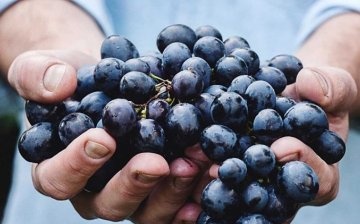
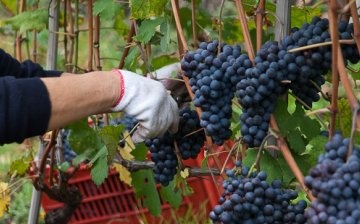
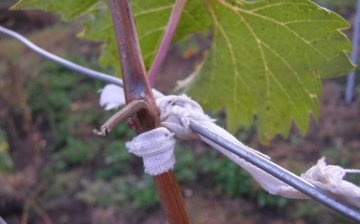
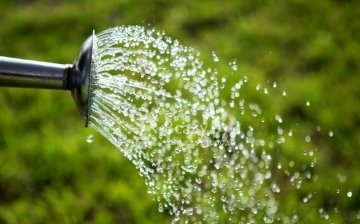

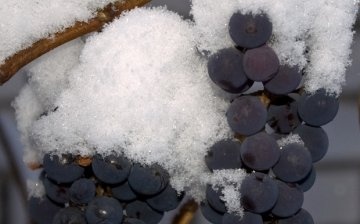






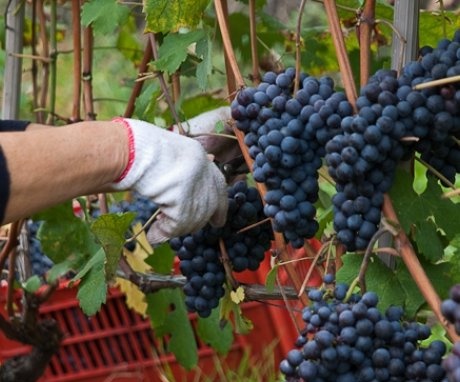
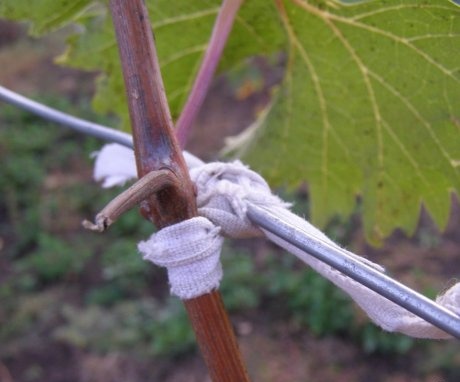


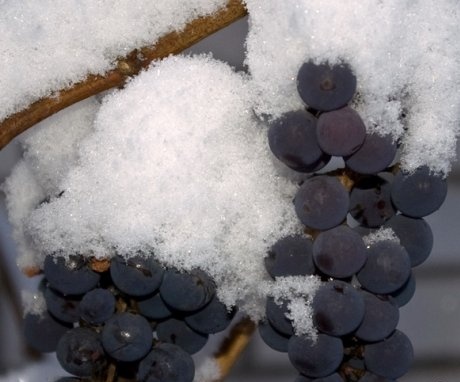
This, as I understand it, is an article for those who live in the southern regions? Because our grapes are planted in trenches, and for the winter they are not covered with spruce branches, but with covering materials, boards, film - it is better all together.